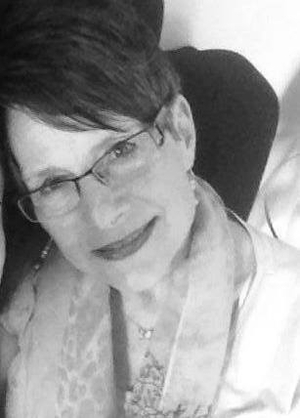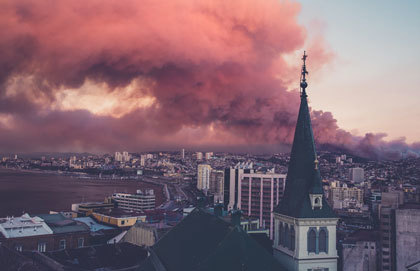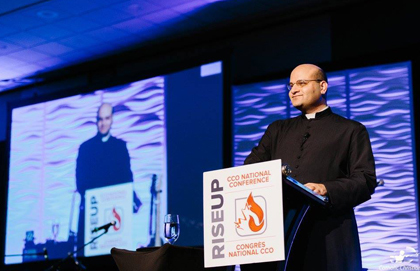We were walking through the Piazza del Popolo, the People's Square, in Rome. The entrance to the Piazza is through a gate in the Aurelian Walls that surround the city. The gate is called the Porta del Popolo. Commissioned by Pope Pius IV and built in the 1560s, the gate was designed by architect Nanni di Baccio Bigio (a pseudonym of Giovanni Lippi). It can best be described as an antechamber to the square that offers a glimpse of incredible beauty just waiting to be discovered. In the 17th century, the inside of the gate was decorated by Bernini. The top of the gate pays tribute to Pope Alexander VII, whose coat of arms has six stylized mountains and a star.
It must have been an awesome sight for the pilgrims making their way along Via Flaminia, one of the most important Roman roads, built in 220 BC, that connected the Adriatic coast to Rome. People from all walks of life, from countries around the Mediterra-nean, came through that gate. Their physical journey was arduous. Some, after many months spent on the road, were at last walking into the metropolis that embraces the Holy Cityof the Apostles Peter and Paul, the home of the Fisherman. Can you imagine their faces when they entered the gate and walked into the Piazza del Popolo?
The plaza spread before them. On the far side are two symmetrical churches, each with a towering dome, one flanking the Via del Corso, a street leading straight through the heart of Rome to the Piazza Venezia. Pope Alexander VII commissioned the churches, the Santa Maria dei Miracoli and the Santa Maria di Montesanto, in 1658. They were both designed by Carlo Rainaldi.
And they would see the 24-metre obelisk, built in Egypt around 1300 BC, which had stood in the Sun Temple in Heliopolis until 10 BC, when it was uprooted on the orders of the Roman Emperor Augustus, who had the obelisk taken to Rome to grace the Circus Maximus in commemoration of the conquest of Egypt. In 1589, Pope Sixtus V moved the obelisk to the centre of the square.
There is an inscription at the base of the obelisk that reads [in English]:
"Emperor Augustus Caesar, son of the divine Caesar, Supreme Pontiff, given the title of imper-ator [a former word for emperor and also meaning Supreme Chief] for the eleventh time and, after subjecting Egypt to the Romans, entitled to represent the people for the fourteenth time, offered this obelisk as a gift to the sun."
Then, beyond the obelisk, beyond the two symmet-rical churches, visitors would see three roads. Three roads, three paths, to St. Peter's Basilica.
Yet,wit all the grandeur the square offered,it was a little church that caught our eyes, tucked away by the Porta del Popolo. It is the Basilica di Santa Maria del Popolo, built in 1472-77 at the site of an 11th century chapel.
The church doors were closed. But there was a door open to the right; and it was there that we came upon an exhibit by Daniel Lifschitz, an artist, a painter of pastels. I thought he was Jewish—his name—and that's what attracted me: that here in a beautiful church well known for its Caravaggios was an exhibit by a Jewish artist. It just felt so right.
I walked in and was greeted by an elderly, slightly di-shevelled man at a very big desk. He had silver hair, thinning on top, a white beard and mustache, and he was wearing a simple long-sleeved, button-down shirt that was not buttoned down. The desk was filled with books. None in English, to my sorrow. There was also a large sign-in book for comments. The gentleman pointed the way into the exhibit: nocharge—rare in Rome.
Walking through the exhibit, I noticed that many of the images looked as if they had been painted and then covered with something translucent, like taking a photo with Vaseline on the lens to obscure some-thing or soften it.
When we were leaving the exhibit, I discovered that the gnome-like man was Daniel Lifschitz, the artist. I tried to convince him that no, he couldn't be. I just wasn't expecting the artist to be there and I had trouble accepting the truth.
So many people wandered into the room asking what time the church would open its doors, not realizing the treasure that waited before them if only they opened their eyes.
Daniel Lifschitz has been creating for more than 60 years with words and pastels. His life journey, physically, emotionally and spiritually is reflected in his labours of love.
I don't know if it is symmetry or serendipity that his exhibit, with light as the theme, was in the church that sheltered some of the greatest works of Caravaggio, who was the first to truly master the art of chiaroscuro, an Italian term that means "bright dark." Chiaroscuro paintings use high contrast, deep shadows and significant highlights to create emotion and drama.
My curiosity was piqued and I began a lively con-versation with him before he was called away by a teacher from the United States who was there with his students. Those minutes were filled with won-derful stories. I did my best to write everything down after the visit, counting on finding missing bits and pieces online. Sadly, none of his books, his biogra-phies, are in English.
He told me the story of his transformation: how he had morphed from a secular Jew born in Berne, Switzer-land, in 1937, into a Communist, a Zionist, a Catholic.
In the spring of 1960, he began the first of many moves. He left school and immigrated to Israel to live on Kibbutz Nir-David. Perhaps this filled his taste for communism. As a boy, he developed an interest in Greek, Roman and Jewish coins; in Etruscan, Greek, Roman, Egyptian (Coptic) art; and amassed a beautiful collection that he donated in 1961 to the Museum of Mediterranean Archaeology when he moved on from the kibbutz.
He seemed to be suffering an existential crisis when he left the kibbutz and started on his personal journey of discovery. He hoped to find it in Northern India, beginning in the Ramakrishna Monastery. Eastern philosophy—perhaps that would be the answer. But within a year, unsettled, he moved on to Greece, starting with the island of Patmos, then to the medi-eval towns of Cortona and Arezzo in Tuscany. And he created pastels for three years.
Again an unease, a discontent, seeped into his soul. He seemed to be constantly searching for something to fill an emptiness that could not be assuaged. In 1966, he asked for baptism in the Catholic Church. It wasn't enough. He yearned for something more, perhaps more contemplative, and joined the monastic community of Giuseppe Dossetti, first in Monteveglio, in the province of Bologna, and then in Jerusalem. Perhaps he hoped he would find with Dossetti a con-nection between the mysticism of the Eastern phi-losophy he had tasted and his new love, Christianity.
Dossetti's community preached the importance of the study of history, theology, patristics, exegesis and philosophy as the way to become closer to the roots of one's belief. This course of study, this concept of coming closer to God through study, is ingrained in Judaism. Lifschitz stayed for six years.
In 1974, he joined the Neocatechumenal Way: a path of Christian initiation, instruction and spiritual well-ness. He felt the need to reaffirm his connection to Catholicism, to rediscover his baptism. He seemed to finally find comfort. He married Angela Bonsangue in Palermo. They had five children. The family trav-elled together, evangelizing in Sicily, Greece, Turkey, Egypt, Israel, Switzerland, Ethiopia and seven years in Texas and Illinois.
To me, his paintings reflect his spiritual pilgrimage, his desire—more than that, his inner need—to connect to God, to the Divine, to the Light, to Salvation. It was an arduous journey for him as he questioned life's purpose, as he sought to clarify his relationship with God, his understanding of the meaning of the hyphen in Buber's I-Thou relationship. Much like the pilgrims on journeys that could take 15 weeks—walking, resting at monasteries along the road—Daniel rested, too, along his path. He studied. He spent time in contemplation, perhaps trying to hear the still small voice within when he rested in that place. These were the much-needed liminal moments on his journey.
I asked him about his works. He told me they are about light. His religious epiphany was tied to his reading in the Bible that God created light and to Psalm 145—a song of thanksgiving. According to Talmudic teaching, one who recites Psalm 145 three times a day is assured a place in Olam Habah—the world to come. Daniel told me that he came to believe that Jesus was in that light. He wanted his paintings to reveal that light.
The shaft of light is the repeating meme throughout his works; and to emphasize the light, the rest of the work is in darker tones and colours. A little like Caravaggio. I wondered, though, as a Jewish woman listening to his stories, if the foggy effect had to do with a certain ambiguity. He told me that he believed that many Catholics are drawn to something in Judaism, the elder brother.
His paintings are his history, of times, places, events and, I believe, his conversion. To me, his paintings, in soft pastel, reveal the inner workings of his unconscious mind, his synthesizing of different perspectives, especially his view on and of God. His paintings reveal his struggle with complexity.
His themes vary from still life flowers and fruits to famous cities, landmarks and people. Many paintings have a Jewish theme: rabbis in their prayer shawls, Jewish men at study, the Sabbath. Others speak of Islam and Christianity. I find the series on fruits disconcerting because many of the titles contain the word dead. Earlier, I described the paintings as hazy. They seem to be similar in technique to sfumato, which is the softening of outlines that makes colours and tones of paint shade one into the other, leaving a misty effect. The word sfumato has several mean-ings, from "soft" to "shaded" to "vanished." The root of the word is fumo—smoke. Is he unconsciously expressing his internal conflicts, his lack of clarity, through this "smoky" technique?
Yet, no matter how dark or hazy the painting, there is always a point or beam of light cutting through it—a sign of hope, as written in Psalm 145:15: "The eyes of all look to you in hope." It isn't that he's in the dark searching for the light; he just seems to still be seeking that true light.
Our past experiences affect our sense of self and our developing worldview or personal philosophy. His mother had wanted a boy and a girl. He was the second child. The second son. That didn't stop his mother. She dressed him as a girl for a very long time. He told me about his homosexual desires and how he turned away from them when he was in a relationship with a Catholic man. That's when he began his journey to Catholicism. He traced his friend years later and discovered that he had become a devout Orthodox Jew!
It's clear from his story that he had moments of doubt, questions on sin, a need to repent, to do teshuva, to go back and try again, taking a different route. He chose many paths. All of this is reflected in his work—from art to writing. For 60 years, Daniel Lifschitz, on his journey to God, created beautiful works of art, poured out his thoughts and preached his love of God. He is God's partner in the work of creation.
I think of Lifschitz as a man searching for his own personal relationship with God. Each path he took, he stopped to study, to learn, to find his way. I think his search exemplifies our search for peace, inner con-tentment, a desire to be at one with God, atonement. I doubt his journey will end until he returns to his Maker. Is that not the purpose in life—to learn and evolve,come closer to God until, at last, we come to rest under the protection of the wings of the Shekinah?
Are we not all seekers? We are blessed with many paths to God before us, like the three roads to the Basilica. Some of us take more time than others to find our path. When I spoke with Daniel Lifschitz, he at no time left me with the impression that he was ever approached by anyone suggesting that he convert from Judaism to Catholicism or move from one Order to another. I think the time has come for all of us to be like him, left to make that journey without interference through proselytizing. Jacob B. Agus wrote in The Evolution of Jewish Thought that "the essence of belief is the free acceptance of the searching human mind."
I must admit that as a Jewish woman, I find it painful to hear of others proselytizing to the Jews. As if being Jewish, the first of God's children, is not quite enough. As if a first-born is lacking something and needs fixing. As if God cannot love all His children in their differences. Odd, because I love all my children and grandchildren in their differences.
Moses Mendelssohn wrote that to intervene in the spiritual life of others, no matter how well meant, must be recognized as unmitigated evil "for it is impossible for me to possess the right to govern the thoughts of others, as if they belonged within my private domain."
Pope Francis, a man I have come to greatly admire, spoke on June 24, 2013, at the International Jewish Committee on Interreligious Consultations.
"Dear elder brothers and sisters, Shalom! The Church recognizes that 'the beginnings of its faith and election are to be found in the patriarchs, Moses and prophets'... the teaching of Saint Paul, who wrote 'the gifts and the call of God are irrevocable' and who also firmly condemned hatred, persecu-tion and all forms of anti-Semitism. Due to our common roots, a Christian cannot be anti-Semitic!"
Pope Francis restated that the 1965 declaration Nostra Aetate remains a "key point of reference for Catholic relations with the Jewish people." The declaration stresses the religious bond shared by Jews and Catholics, reaffirms the eternal covenant between God and the Jewish people, and calls for a halt to attempts to convert Jews.
The time has come for all of us to be pilgrims, like Daniel, each of us on our own path, taking our own unique journey, seeking our own "Way" to the Truth and Light of God.






